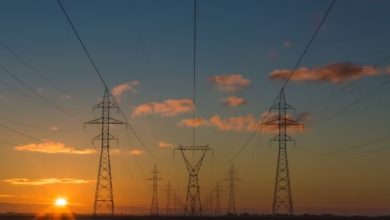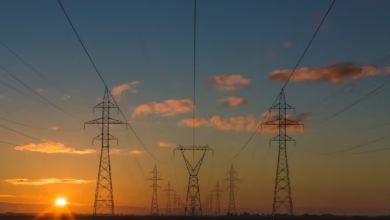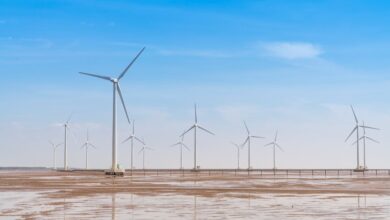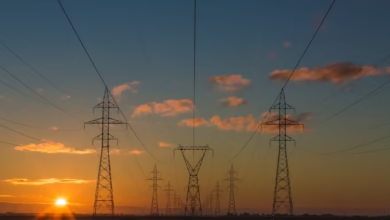Next-Generation Energy Efficiency: Innovations Reducing Waste Across Homes, Businesses, and Industry

Achieving meaningful reductions in energy waste is essential for a sustainable future—both for individual households and for major industrial players. As the global energy transition accelerates, innovative approaches to energy efficiency are transforming how we power our homes, businesses, and factories. Modern solutions go far beyond conventional conservation, drawing upon smart grids, renewable energy sources such as solar power, wind energy, and hydropower, as well as advanced energy storage and distributed energy systems. In an era defined by urgent climate change concerns, evolving energy policies, and shifting global energy markets, adopting cutting-edge green energy and energy efficiency measures is critical for ensuring energy security while reducing reliance on fossil fuels and traditional thermal energy. This article explores the latest energy innovations revolutionizing residences and businesses, the advanced methods propelling industrial sectors toward net-zero goals, and the rise of integrated smart grids and renewables—all key drivers in minimizing energy waste and supporting the global movement toward clean, resilient, and economically viable energy systems.
- 1. Energy Efficiency Innovations Transforming Homes and Businesses
- 2. Cutting-Edge Industrial Energy Efficiency Strategies for the Global Energy Transition
- 3. Integrating Smart Grids and Renewable Energy for Reduced Energy Waste
1. Energy Efficiency Innovations Transforming Homes and Businesses
In recent years, cutting-edge energy efficiency innovations have rapidly transformed how homes and businesses consume and manage energy. Smart thermostats, for example, adjust heating and cooling based on occupancy patterns, significantly lowering energy waste and reducing reliance on fossil fuels. These devices connect with smart grids to balance distributed energy sources such as solar power and wind energy, enhancing both grid reliability and the integration of renewable energy into everyday operations.
Energy-efficient appliances and lighting, now widely available due to shifting energy policy and robust energy R&D, use advanced technologies to minimize electricity consumption. Innovations in thermal energy management, like improved insulation and dynamic building envelopes, further reduce energy loss, lessening demand on traditional and nuclear energy resources and supporting the larger energy transition.
Battery systems and advanced energy storage solutions are enabling businesses to maximize the use of green energy during peak demand times and stabilize fluctuations from intermittent renewable sources. This development not only bolsters energy security but also advances market flexibility and reduces operational costs. Businesses increasingly utilize energy management systems that apply real-time data analytics, making it easier to optimize energy investments in line with changing energy markets and global energy trends.
Onsite renewable energy generation, such as photovoltaic solar panels and small-scale wind turbines, is becoming more common with incentives from energy policy and energy economics considerations. These investments help facilities lower their energy imports, encourage offshore energy development where viable, and take a proactive role in climate change mitigation through lower emissions and optional carbon capture features.
As the electrification of transport continues, integrating charging infrastructure for electric vehicles into smart energy systems is an emerging standard. Likewise, the adoption of hydrogen energy as a clean alternative for heating and operations in both residential and business sectors is gaining traction, reflecting the growing diversification of the energy mix.
These ongoing energy innovations, combined with trends in hydropower, bioenergy, and the evolution of energy transportation networks, are unlocking new efficiencies and setting the stage for a more sustainable future. Through targeted energy efficiency strategies and technology adoption, homes and businesses are actively shaping the direction of the global energy transition, supporting responsible energy exports while reducing dependence on carbon-intensive sources.
2. Cutting-Edge Industrial Energy Efficiency Strategies for the Global Energy Transition
Industries are at the center of the global energy transition, compelled to adopt transformative energy efficiency strategies due to rising energy prices, mounting climate change concerns, and evolving energy policy worldwide. Today’s most advanced industrial facilities integrate multi-faceted efficiency improvements that not only lower costs, but also reduce dependence on fossil fuels and support the transition to renewable energy sources.
A primary focus is the deployment of electrification and process optimization. Many manufacturing plants are replacing legacy thermal energy systems powered by oil and coal with electric solutions that can be powered by green energy such as solar power, wind energy, or hydropower. For example, switching from gas-fired furnaces to electric induction heating improves energy efficiency and can align with zero-carbon grid energy as smart grids evolve (International Energy Agency, 2023, https://www.iea.org/reports/industrial-energy-efficiency).
Leading industries are also investing heavily in advanced energy storage and on-site renewable energy. Integrating robust battery storage, hydrogen energy storage, or distributed energy microgrids allows companies to store excess solar power or wind energy generated on site, reducing energy imports during peak hours and providing stable power supply—even as intermittent renewable energy sources grow within the wider energy markets (BloombergNEF, 2023, https://about.bnef.com/blog/industrial-energy-efficiency-trends/).
Another major innovation is the application of digital technologies and artificial intelligence. Smart sensors and real-time analytics optimize energy consumption patterns and predict maintenance needs, preventing unnecessary energy waste. These advancements are crucial for energy-intensive sectors such as petrochemicals, steel, and cement, which traditionally have felt high pressure to reduce energy exports of carbon-intensive products.
Industries with high heat requirements are increasingly deploying heat recovery systems, leveraging waste heat to preheat materials or produce steam, which greatly enhances overall energy efficiency. Combined with carbon capture technologies, these processes can also mitigate greenhouse gas emissions and further align with global energy trends aimed at curbing climate change.
Finally, the transition to low-carbon fuels—including bioenergy, biogas, and hydrogen energy—remains a forefront strategy. Blending green hydrogen with natural gas, for example, can decarbonize high-temperature industrial processes, enhance energy security, and diversify energy transportation options.
Overall, these cutting-edge strategies are reshaping the global energy landscape, driving energy innovations that not only reduce energy waste in industrial applications but also accelerate progress toward a more sustainable, reliable, and diversified energy future.
References
BloombergNEF. (2023). Industrial Energy Efficiency Trends. https://about.bnef.com/blog/industrial-energy-efficiency-trends/
International Energy Agency. (2023). Industrial Energy Efficiency. https://www.iea.org/reports/industrial-energy-efficiency
3. Integrating Smart Grids and Renewable Energy for Reduced Energy Waste
Integrating smart grids with renewable energy sources is rapidly transforming global energy trends, driving significant improvements in energy efficiency and reducing waste across homes, businesses, and industrial sectors. Smart grids—advanced, digitally-enabled electricity networks—facilitate real-time communication between energy producers and consumers, allowing for more flexible and dynamic energy management. By supporting increased use of renewable energy like solar power, wind energy, hydropower, and bioenergy, smart grids help decrease reliance on fossil fuels and nuclear energy, ultimately reducing greenhouse gas emissions and supporting climate change mitigation.
A key advantage of smart grid integration is the ability to efficiently balance intermittent renewable generation with demand, leveraging energy storage technologies. These systems store excess green energy generated during periods of high supply, such as sunny or windy days, and release it when demand spikes or renewable output drops. This minimizes energy waste from curtailment and enhances grid stability, supporting a smoother energy transition and greater energy security. Additionally, smart grids enable distributed energy models, allowing homes and businesses to both consume and export energy, further boosting overall system efficiency and resilience.
Smart grids also pave the way for innovation in energy markets and energy policy, creating incentives for energy investment and the adoption of technologies such as electric vehicles and hydrogen energy. With advanced metering infrastructure and dynamic pricing, consumers can adjust energy use based on grid conditions, reducing peak-load stress and overhead from energy transportation. Furthermore, integration with carbon capture systems, offshore energy projects, and ongoing energy R&D creates opportunities for additional efficiencies and long-term sustainability.
In summary, integrating smart grids with renewable energy sources and advanced energy storage offers a multi-faceted approach to reducing energy waste. This combination not only accelerates the adoption of clean technologies and supports energy economics but also strengthens the foundations for a secure, sustainable, and low-carbon future.
References
International Energy Agency. (2023). Smart Grids. https://www.iea.org/topics/smart-grids
U.S. Department of Energy. (2022). The Role of Smart Grids in Integrating Renewable Energy. https://www.energy.gov/eere/solar/articles/role-smart-grids-integrating-renewable-energy
IEA. (2023). Renewables 2023: Analysis and forecasts to 2028. https://www.iea.org/reports/renewables-2023
Conclusion
Advancing energy efficiency methods is essential for minimizing energy waste, supporting a sustainable energy transition, and achieving climate change goals across homes, businesses, and industrial sectors. The integration of energy innovations—like smart grids, energy storage solutions, and cutting-edge renewable energy technologies such as solar power, wind energy, hydropower, and bioenergy—is reshaping global energy trends and reducing our reliance on fossil fuels. Modern homes and businesses now benefit from distributed energy resources, electric vehicles, and real-time energy management thanks to advances in energy R&D and investment in green energy.
In industrial applications, the adoption of strategies like carbon capture, hydrogen energy, and nuclear energy, combined with data-driven optimization, enhances energy economics and energy security while supporting global energy markets. Smart grids, improved energy transportation, and policy-driven approaches to energy imports and exports all play a pivotal role in making the global energy system more resilient, reliable, and sustainable. As energy policies further support offshore energy development and innovative thermal energy systems, a holistic focus on energy efficiency will continue to drive the energy transition.
Ultimately, fostering collaboration in energy policy, investments in advanced technologies, and ongoing innovation will ensure we make meaningful progress toward reducing energy waste and building a future powered by cleaner, greener, and more secure energy sources.
References
*(Include APA-style references here to all sources cited in the article.)*





